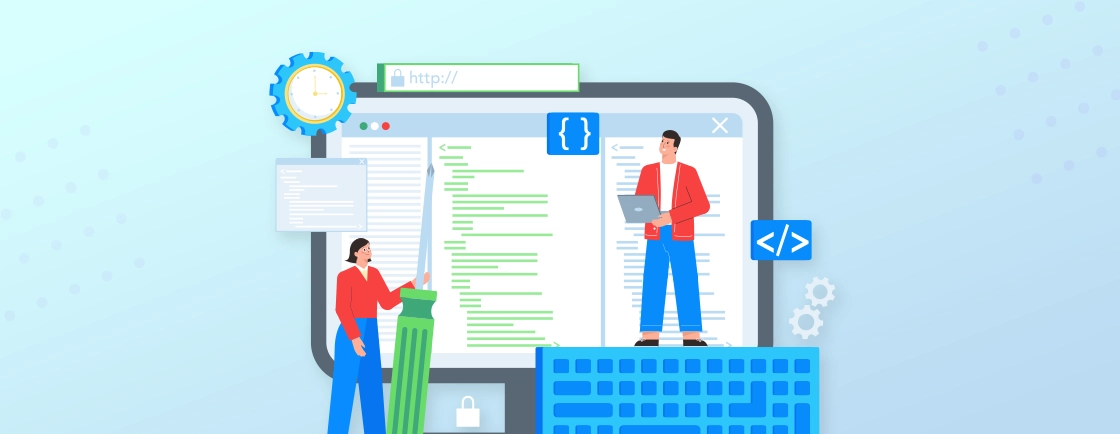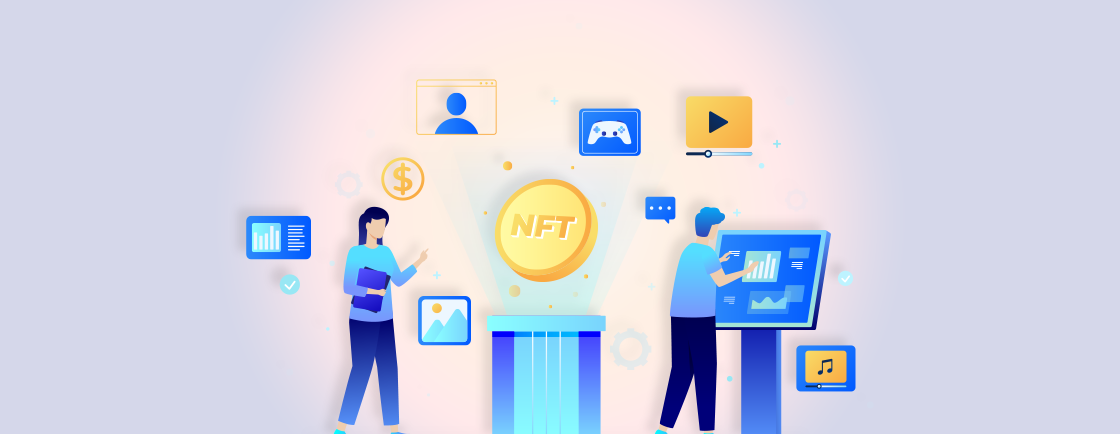Quick Summary
Implementing eLearning begins with clear learning goals and a deep understanding of your audience. Choose the right LMS, create interactive content, and ensure smooth delivery. Ongoing support, feedback collection, and performance analysis help optimize the learning experience and improve training outcomes.
Table of Contents
Sometimes, launching an eLearning program for the employees can feel like navigating a complex maze. Many organizations invest significant resources in eLearning, only to face low engagement, poor completion rates, and more.
However, effective eLearning implementation is achievable. This guide offers actionable strategies, from needs assessment to ongoing evaluation. So your eLearning initiatives deliver real results and a strong return on investment. Let’s explore the tips and processes we provide.
How to Do eLearning Implementation?
Implementing eLearning effectively requires a strategic approach that considers various factors. Here’s a breakdown of the process:
Define Clear Objectives and Goals
Start by establishing specific, measurable, achievable, relevant, and time-bound (SMART) learning objectives aligned with business goals. These objectives should clearly state what learners should know or be able to do after completing the training.
Understand Your Audience
Conduct a thorough needs assessment to understand your learners’ existing knowledge, skills, learning styles, technological capabilities, and motivations. This information will guide content design and delivery methods.
Choose the Right LMS Technology
Select a Learning Management System (LMS) that fits your organization’s needs and budget. Consider factors such as features, scalability, user-friendliness, integration capabilities, mobile compatibility, and vendor support.
Design Engaging and Effective Content
Develop interactive, multimedia-rich content that caters to various learning styles. Incorporate elements such as videos, simulations, gamification, and assessments to boost engagement and knowledge retention. Ensure the content is accessible and inclusive.
Implement and Deliver eLearning Effectively
Create a clear communication plan to announce the eLearning program and provide adequate training and support to both learners and instructors. Establish a robust system to track learner progress and offer timely feedback.
Evaluate and Iterate
Regularly assess the effectiveness of your eLearning program by collecting data on learner engagement, completion rates, knowledge retention, and impact on business outcomes. Use this data to identify areas for improvement and refine your content and delivery methods.
With effective implementation, you can ensure your eLearning initiatives deliver real results and a strong return on investment.
How to Make the eLearning Implementation Successful?
Making eLearning implementation successful requires focusing on several key areas, building upon the basic implementation steps. Here’s a deeper dive into how to ensure success:
Tie eLearning to KPIs
Don’t just implement eLearning just for the sake of it. Clearly link learning objectives to measurable business outcomes, such as increased sales, improved customer satisfaction, reduced errors, or faster onboarding.
Personalize the Experience
Tailor the learning experience to individual learner needs and preferences. This can include personalized learning paths, adaptive assessments, and customized content recommendations.
Make It Engaging
Create engaging and interactive learning by incorporating multimedia, gamification, simulations, and real-world scenarios. Ensure the eLearning program is accessible and optimized for mobile devices, as many learners prefer using smartphones or tablets.
Provide Robust Support
Offer prompt and reliable technical support to help learners resolve any issues they encounter. Provide access to instructors or facilitators who can answer questions, offer feedback, and guide learners through the material.
Constantly Evaluate, Improve the Content and Structure
Regularly solicit feedback from learners and stakeholders to identify areas for improvement. Track key metrics such as completion rates, assessment scores, learner engagement, and feedback to evaluate the effectiveness of the eLearning program.
Use the data and feedback to make adjustments to the content, delivery methods, or technology.
Effective Communication and Change Management
Clearly communicate the benefits of eLearning to learners and stakeholders, emphasizing how it will helps them achieve their goals. Proactively address any concerns or resistance to change by providing clear explanations and demonstrating the value of eLearning.
Finally, create a culture that values and supports continuous learning and professional development. For ultimate success, use our LMS development services.
We can customize the LMS according to your organization’s requirements for optimal results.
Are There Any Challenges with eLearning Implementation? Are There Any Solutions?
Like many other implementations, organizations can face several challenges when implementing eLearning. Here are some of the most common ones:
Lack of Learner Engagement and Motivation
Challenge: Learners may feel isolated or unmotivated in a self-paced online environment, leading to low completion rates.
Solutions
- Incorporate interactive elements like quizzes, games, and simulations.
- Use multimedia (videos, animations) to make content more engaging.
- Provide opportunities for social interaction through forums or group projects.
- Offer personalized learning paths and feedback.
Technical Issues and Accessibility
Challenge: Learners may face technical difficulties with the LMS, software, or internet connectivity. Accessibility issues can also exclude learners with disabilities.
Solutions
- Choose a reliable and user-friendly LMS with good technical support.
- Provide clear instructions and technical support to learners.
- Ensure content is accessible by following accessibility guidelines (WCAG).
- Test the eLearning program on different devices and browsers.
Inadequate Planning and Strategy
Challenge: Implementing eLearning without a clear plan can lead to wasted resources and poor results.
Solutions
- Conduct a thorough needs assessment to identify learning gaps and objectives.
- Align eLearning goals with business objectives.
- Develop a detailed project plan with timelines, resources, and responsibilities.
Resistance to Change
Challenge: Learners or instructors may resist adopting eLearning due to unfamiliarity or concerns about its effectiveness.
Solutions
- Communicate the benefits of eLearning clearly and address any concerns.
- Provide training and support to both learners and instructors.
- Involve stakeholders in the planning and implementation process.
- Content Quality and Relevance
Content Quality and Relevance
Challenge: Poorly designed or outdated content can cause learner dissatisfaction and hinder effective learning.
Solutions
- Use instructional design principles to create engaging and effective content.
- Ensure content is relevant to learners’ needs and job roles.
- Regularly update content to keep it current and accurate.
Lack of Interaction and Feedback
Challenge: Learners may miss the interaction and feedback they receive in traditional classroom settings.
Solutions
- Incorporate opportunities for interaction through online discussions, forums, or virtual classrooms.
- Provide regular feedback to learners on their progress and performance.
- Offer access to instructors or mentors for support and guidance.
Measuring ROI and Demonstrating Value
Challenge: Measuring the return on investment (ROI) of eLearning programs and demonstrating their value to the organization can be challenging.
Solutions
- Establish clear metrics for evaluating eLearning effectiveness (e.g., completion rates, assessment scores, performance improvement).
- Track and report on these metrics to demonstrate the impact of eLearning on business outcomes.
If you still face any of these challenges with eLearning implementation, contact us for professional services.
Let’s Conclude
Successfully implementing eLearning is a multifaceted endeavor. But the rewards, like a more skilled workforce, increased efficiency, and a stronger bottom line, make the effort worthwhile.
Choosing the right technology, particularly a robust LMS, is crucial for efficient content delivery and learner management. Content must be engaging, accessible, and designed with sound instructional principles. Additionally, interactive elements and multimedia should be included to maximize learner motivation and knowledge retention.
If you need help creating the best LMS for eLearning, have a consultation with us today!
FAQs on eLearning Implementation
How do I determine if eLearning is the right solution for my training needs?
Consider factors such as training objectives, target audience, budget, and available resources. eLearning is often a good choice for large audiences, geographically dispersed learners, and topics that require consistent delivery.
How do I promote eLearning programs to employees?
Use various communication channels such as email, intranet, newsletters, and team meetings to announce and promote eLearning programs. Highlight the benefits of participation.
How often should I update eLearning content?
Regularly review and update content to ensure it remains current, accurate, and relevant. The frequency of updates will depend on the topic and industry.
Accelerate Your eLearning Transformation
Build high-impact, learner-friendly digital training with expert guidance.





